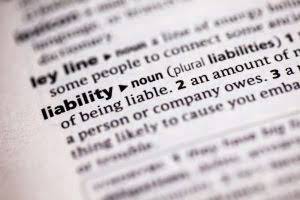Comparing financial data from one accounting period to another or an industry-standard provides a realistic picture of the entity’s financial performance. Thus, without a consistent approach is accounting principles, the summary of accounts would provide meaningless information. Consistent use of one accounting practice also eliminates irregularities and restricts anomalies. GHI Nonprofit Organization relies heavily on donations from individuals and corporations to fund its charitable activities. To build trust among donors and ensure transparency, GHI Nonprofit Organization consistently applies accounting principles and practices specific to the nonprofit sector. By doing so, the organization can provide reliable financial information that accurately reflects its financial position and performance.
Introduction to the Consistency Principle in Accounting
Any significant changes in the accounting process could potentially impact the consistency of accounting practices. Given that the financial data presented remains consistent over time, it assists management in effectively tracking economic trends, forecasting future company performance, and making sound business decisions based on historical data. The consistency principle is a fundamental concept in accounting that emphasizes the importance of maintaining uniformity in financial reporting practices. By adhering to this principle, businesses can ensure accuracy, comparability, and reliability in their financial statements over time. In this section, we will delve into the significance of embracing the consistency principle for accurate financial reporting from various perspectives.
Consistency Principle of Accounting
At AccountingDepartment.com, every one of our bookkeepers and financial controllers follows the same processes and procedures. For instance, training sessions can focus on educating employees about the proper classification of expenses according to Generally accepted Accounting principles (GAAP) or International Financial Reporting Standards (IFRS). This knowledge will help ensure consistent expense reporting throughout the organization. – Assume our example above except now Todd has decided to change is method of accounting from using both sales and gift cards payable to only accounting for his gift cards in a payables account. Todd is changing from a non-GAAP appropriate method to an approved method of accounting.
Consistency Principle of Accounting FAQs
In a complex and large business, the selection of accounting principles such as inventory costing methods can put huge effects on financial results. On the flip side, cost accountants can also use the lack of consistency to showcase favorable accounting results and increased profits. The practical implications of not following the using xero files to manage your documents can be calamitous for the company. The competition’s commissions such as SEC can also interpret such moves as artificial profit manipulation and result in penalties.
While in the case of auditors, it helps comparing business data much easier as the same accounting methods are followed consistently. When these gift certificates are sold, Todd sometimes credits a sale and sometimes he credits a gift cards payable account. By not accounting for the gift cards consistently, Todd makes the financial statements misleading. Companies may need to change their accounting methods due to changes in the industry or other external factors. However, any changes must be disclosed and explained in the financial statements to ensure transparency.
11 Financial may only transact business in those states in which it is registered, or qualifies for an exemption or exclusion from registration requirements. 11 Financial’s website is limited to the dissemination of general information pertaining to its advisory services, together with access to additional investment-related information, publications, and links. Finance Strategists has an advertising relationship with some of the companies included on this website. We may earn a commission when you click on a link or make a purchase through the links on our site. Shaun Conrad is a Certified Public Accountant and CPA exam expert with a passion for teaching. After almost a decade of experience in public accounting, he created MyAccountingCourse.com to help people learn accounting & finance, pass the CPA exam, and start their career.
Consistency in accounting methods and principles is critical for the users of financial statements because it enables them to make meaningful comparisons between financial statements from different periods. Using the consistency principle, a company will have a similar structure for its financial statements each period. This would make it easier for investors, creditors, managers, and other stakeholders to compare the financial and operational performance of a business over different years. By using the same accounting methods and policies, accounting business managers of a company will become familiar with the process. This will mean that they will only have to be trained initially after which they will be able to perform the financial reporting tasks consistently day in and day out. The Consistency Principle is implemented by regularly applying the same accounting methods and procedures.
One of the significant challenges in maintaining consistency in accounting is the introduction of new accounting standards. As accounting standards evolve, businesses must adopt new practices to remain compliant. These changes could potentially impact the consistency of accounting practices, and it is essential to ensure that the changes are implemented uniformly across the organization. Failure to maintain uniformity in accounting practices could lead to errors in financial reporting and could potentially lead to legal issues. As you can see, the https://www.bookkeeping-reviews.com/ is intended to keep financial statements similar and comparable.
Understanding accounting conventions is essential for anyone who wants to work in the field of accounting or finance, as it is the foundation upon which all financial reporting is based. This involves being in line with whatever accounting principles, standards, and concepts are in use within other business units in similar fields (i.e., having accounting policies consistent with the rest of the industry). – Bob’s Computers, a computer retailer, has historically used FIFO for valuing its inventory. In the last few years, Bob’s has become quite profitable and Bob’s accountant suggests that Bob switch to the LIFO inventory system to minimize taxable income. According to the consistency principle, Bob’s can change accounting methods for a justifiable reason.
As per the consistency principle, the company can only do this if it has a justifiable reason and whether or not reducing the tax bill is justifiable is debatable. If the accounting policies and methodologies employed by a company in preparing the financial statements were to change every period, this would significantly increase the cost of training and reduce the efficiency of the employee. If the company chooses to change an accounting policy or methodology, it will need to disclose this change in its financial statements including the financial impact of the change, date of change and the rationale behind this change. This will ensure that the company refrains from changing its accounting policy except when there are reasonable grounds for it to do so. For example, it requires precise matching of expenses with revenues for the same accounting period (the matching principle).
This should sound an alarm to the users of the financial statements for a deeper investigation. Upon investigation, if it is found that the company is violating the consistency principle without proper disclosers and rationale, then its financial statements would no longer be reliable or comparable. The consistency principle, however, does not dictate that a company must use a certain accounting policy forever.
- Now consider that the same company, Apple Computers, plans on taking a loan from the bank and need to show good profits on its statements to do so.
- This was disclosed, as required by GAAP, in the footnotes to the audited financial statements.
- When entities use consistent accounting methods and principles, users can more easily identify trends, changes, and anomalies in an entity’s financial position and performance.
When financial statements are consistent over time, users can more easily identify trends, changes, and anomalies in an entity’s financial position and performance. Generally Accepted Accounting Principles make financial reporting standardized and transparent, using commonly accepted terms, practices, and procedures. During the integration process, ABC Manufacturing Company ensured that it aligned the accounting policies and practices of the acquired company with its own established standards. By doing so, ABC Manufacturing Company maintained consistency in reporting financial information across all its operations.
If a company wishes to switch to another accounting method, it must provide the rationale to do so in terms of how the new methodology is better than the older one. For instance, a company might wish to switch from a straight-line method of depreciation to a double-declining method as it wants to realize more of the total depreciation expense in the earlier years than later. The federal government began working with professional accounting groups to establish standards and practices for consistent and accurate financial reporting. GAAP, or Generally Accepted Accounting Principles, is a commonly recognized set of rules and procedures designed to govern corporate accounting and financial reporting in the United States (US). If the Consistency Principle is not followed, it becomes difficult to compare and analyse a company’s finances over an extended period. The financial statements may also become unreliable or misleading, causing potential misinterpretations by investors or analysts.
This not only streamlined internal processes but also enhanced external stakeholders’ ability to evaluate the performance and financial health of the combined entity. This means that both ratio analysis and trend analysis wouldn’t be available for investors and creditors to help gauge the company’s current performance. GAAP does allow companies to change accounting treatments when it is reasonable and justifiable. Companies are not allowed to change from one method to another in a current year then back to the previous method the following year.
All of the change requires full disclosure in the financial statements and how the change is affected. In short, GAAP is designed to ensure a consistent presentation of financial statements, making it easier for people to read and comprehend the information contained in the statements. In other words, businesses should not use a certain accounting method one year, and a different accounting method the next year.
Outside the US, the alternative in most countries is the International Financial Reporting Standards (IFRS), which is regulated by the International Accounting Standards Board (IASB). While the two systems have different principles, rules, and guidelines, IFRS and GAAP have been working towards merging the two systems. Consequently, stakeholders like investors, creditors, and regulators can make informed decisions based on consistent and trustworthy information. When the GAAP Consistency Principle Creates a ChallengeIf you struggle with high turnover in your accounting department, the GAAP consistency principle is one of the first to suffer.
Companies must ensure that all employees are following consistent accounting practices and that any deviations are properly documented and explained. When you have several different people recording data, compiling reports, and performing other financial documentation, the Consistency Principle is seldom followed. You need a set method in place internally or to rely on an accounting firm who follows consistent policies and procedures in order to ensure GAAP is followed. It is useful to discuss with the company’s auditors what constitutes a material item, so that there will be no issues with these items when the financial statements are audited. Overall, the consistency principle is important in accounting because it promotes accuracy, comparability, transparency, and reliability in financial reporting.
When you need to borrow money, look for investors for expansion, or take your company public, your financial statements and accounting methods will be reviewed. An accurate view of your company’s numbers is critical for lenders and investors in determining whether your business is “worth the risk,” so to speak. The consistency principle does not state that businesses always have to use the same accounting method forever.
If such a change is made, fully document its effects and include this documentation in the notes accompanying the financial statements. The importance of the consistency principle is in its ability to ensure comparability of financial reporting. If a company uses different accounting policies in recording the same or similar transactions, it would be difficult for investors and other interested parties to make reasonable comparisons. Now consider that the same company, Apple Computers, plans on taking a loan from the bank and need to show good profits on its statements to do so.
If a change is necessary, the new method should be used consistently and the effect of change disclosed in the financial statements. Similarly, creditors rely on consistent financial reporting to assess a company’s creditworthiness. Consistency allows them to analyze trends and patterns in a company’s financial statements over time. For example, if a company suddenly changes its revenue recognition policy from recognizing revenue at the point of sale to recognizing it upon delivery, it may create confusion and raise concerns about the company’s financial stability. On the other hand, if the company consistently applies the same revenue recognition policy throughout its reporting history, creditors can better evaluate its ability to generate cash flows and meet its debt obligations.
Government regulators also benefit from consistency in financial reporting as it facilitates effective oversight and regulation of businesses. By enforcing consistent accounting standards across industries, regulators can ensure fair competition and prevent misleading or fraudulent practices. Consistent reporting allows regulators to identify trends or anomalies in financial statements more easily, enabling them to take appropriate actions promptly. In accounting, consistency requires that a company’s financial statements follow the same accounting principles, methods, practices and procedures from one accounting period to the next. This allows the readers of the financial statements to make meaningful comparisons between years.
A telling indicator of such a situation is when the underlying company operational activity levels do not change, but profits suddenly increase. Auditors are especially concerned that their clients follow the consistency principle, so that the results reported from period to period are comparable. This means that some audit activities will include discussions of consistency issues with the management team. An auditor may refuse to provide an opinion on a client’s financial statements if there are clear and unwarranted violations of the principle. The concept of consistency means that accounting methods once adopted must be applied consistently in future.
Maintaining consistency in accounting practices is essential to ensure accurate financial reporting. The challenges in maintaining consistency could range from changes in accounting standards to high turnover rates of personnel. It is essential to ensure that any changes in accounting practices are implemented uniformly across the organization. Failure to maintain uniformity in accounting practices could potentially lead to errors in financial reporting and could lead to legal issues.
As mentioned earlier, if a business decides to make any changes to their accounting method, this change will need to be disclosed. Normally, businesses will note these changes in the footnotes of their financial statements. The purpose of these footnotes is to clearly present and state the accounting methods and practices of your business, verifying the transparency of your business activities to the readers. The primary reason for the Consistency Principle is to make the financial statements comparable from period to period. As consistency is one of the fundamental accounting assumptions unless there is documentation supporting a change, it is assumed that the accounting policies used last year are followed in the current year. Your financial statements are key to showing the state and solvency of your business.
Each method has a slightly different outcome depending on what management is trying to accomplish. The monetary unit principle states that you only record business transactions that can be expressed in terms of a currency and assumes that the value of that currency remains relatively stable over time. GAAP prepared financial statement, looking at inventory, for instance, you know you are looking at a dollar figure, not a number of physical units. Under GAAP in the U.S., assets are recorded and reported on the balance sheet at their original cost. Historical cost is objective because an auditor, or anyone for that matter, could observe the receipt for the asset and come up with the same cost, which is, in fact, one of the tests that auditors perform on major assets. This was disclosed, as required by GAAP, in the footnotes to the audited financial statements.







